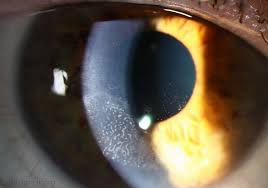Table of Contents
ToggleFor many individuals seeking vision correction, modern ophthalmologic advances offer a plethora of solutions, with LASIK and Feco (Phacoemulsification Cataract Surgery) being two of the most popular.
But what happens when someone undergoes Feco surgery and still desires further vision improvement?
Is it possible to have LASIK surgery afterwards?
This article explores this intriguing question, providing valuable insights for post-Feco surgery patients, ophthalmology enthusiasts, and healthcare professionals.
Understanding Feco Surgery
What is Feco Surgery?
Phacoemulsification, commonly referred to as Feco surgery, is a procedure to remove cataracts—a clouding of the eye’s natural lens.
During Feco surgery, the surgeon uses an ultrasound device to break up and remove the cloudy lens, replacing it with a clear artificial one, known as an intraocular lens (IOL).
This procedure is renowned for its efficiency and quick recovery time compared to older cataract removal methods.
Common Outcomes of Feco Surgery
For most patients, Feco surgery results in significantly improved vision, reduced glare, and enhanced colour perception. However, despite these gains, some patients may still require additional vision correction for residual refractive errors or astigmatism, which is where LASIK surgery might come into consideration.
Introduction to LASIK Surgery
What is LASIK Surgery?
LASIK (Laser-Assisted In Situ Keratomileusis) is a widely practised refractive surgery used to correct common vision issues such as myopia (nearsightedness), hyperopia (farsightedness), and astigmatism.
The procedure reshapes the cornea—the clear front part of the eye—so that light entering the eye can be properly focused onto the retina, resulting in clearer vision.
Benefits and Considerations
The primary benefit of LASIK is its ability to significantly decrease or potentially eliminate the dependence on glasses or contact lenses.
Most patients experience rapid vision improvement and minimal discomfort post-surgery. However, LASIK is not without its limitations and risks, making patient selection and thorough pre-surgical evaluation essential.
Can LASIK Be Performed After Feco Surgery?
Compatibility of LASIK Post-Feco
Performing LASIK after Feco surgery is indeed possible, but it requires careful consideration.
The core principle rests on the eye’s condition post-cataract surgery and whether the residual refractive error is stable and suitable for corneal reshaping.
Key Factors to Consider
1. Timing:
Stability: Post-Feco, it’s crucial for the eye to reach a state of refractive stability before considering LASIK. This stability generally requires a duration of several weeks to months to achieve.
2. Corneal Thickness:
Measurement: Adequate corneal thickness is necessary for LASIK since reshaping involves removing some corneal tissue. A detailed pachymetry test will determine if the cornea is thick enough.
3. Ocular Health:
Comprehensive Examination: The overall health of the eye, including the status of the retina and cornea, must be thoroughly evaluated. Pre-existing conditions may have an impact on the results of LASIK surgery.
4. Type of IOL Used:
Compatibility: Different types of intraocular lenses used in Feco surgery may impact the effectiveness of subsequent LASIK surgery. Multifocal IOLs, for example, might complicate the LASIK outcomes more than monofocal IOLs.
5. Patient Expectations:
Realistic Goals: Setting realistic expectations is key. While LASIK may enhance vision, it may not always achieve absolute perfection, and understanding potential outcomes is essential.
Research and Studies on LASIK Post-Feco
Clinical Studies and Findings
Research exploring LASIK after Feco surgery is promising, showcasing favourable outcomes for many patients. Studies suggest that individuals with stable post-Feco refractive errors can benefit significantly from LASIK, experiencing improved visual acuity and satisfaction.
- Study 1: A longitudinal study with patients who underwent LASIK following Feco procedures. The findings indicated that the majority of participants reported satisfactory outcomes, highlighting improved vision clarity.
- Study 2: Another study found that LASIK was effective in correcting residual refractive error in post-Feco patients, with minimal complications reported.
Procedure and Preparation
Preparing for LASIK After Feco
1. Comprehensive Eye Exam:
A thorough eye examination is the first step to evaluate the suitability for LASIK. This includes tests for corneal topography, thickness, and overall eye health.
2. Discussion with an Ophthalmologist:
Engage in detailed discussions with your ophthalmologist or refractive surgeon about your vision goals, lifestyle needs, and any concerns you may have.
3. Pre-Surgical Instructions:
Follow any pre-surgical guidelines provided by your surgeon, which may include avoiding contact lenses for a period before surgery and arranging transportation post-procedure.
The LASIK Procedure
The LASIK procedure typically involves:
1. Creating a Corneal Flap:
A precise flap is made on the cornea’s surface using a microkeratome or femtosecond laser.
2. Reshaping the Cornea:
The corneal tissue underneath the flap is reshaped using an excimer laser to correct the refractive error.
3. Repositioning the Flap:
The flap is meticulously repositioned, functioning as a natural dressing.
4.Post-Surgery Care:
Post-operative care is crucial for optimal healing. This includes medication, follow-up appointments, and adherence to activity restrictions as advised.
Potential Risks and Complications
Common Risks
All surgical procedures entail inherent risks, and LASIK following Feco is no exception. Common risks include:
- Dry Eyes:
Temporary dryness is common post-LASIK but can usually be managed with lubricating drops.
- Visual Disturbances:
Certain patients may experience halos or glare, particularly in low-light conditions.
- Infection:
Though rare, infections can occur, emphasizing the importance of following post-operative care instructions.
Minimizing Risks
Selecting a skilled and experienced surgeon, adhering to all pre-and post-operative instructions, and maintaining open communication with your healthcare provider are critical steps in minimizing risks and achieving successful outcomes.
Making an Informed Decision
For post-Feco patients considering LASIK, the path to enhanced vision is indeed possible but requires careful planning and expert consultation. Understanding the intricacies involved and collaborating with your ophthalmologist will guide you in making the best decision tailored to your needs.
If you’re contemplating LASIK after Feco surgery, schedule an appointment with an experienced ophthalmologist to discuss your options and evaluate your eye health. Unlock the potential for even clearer vision and take control of your ocular future today.













